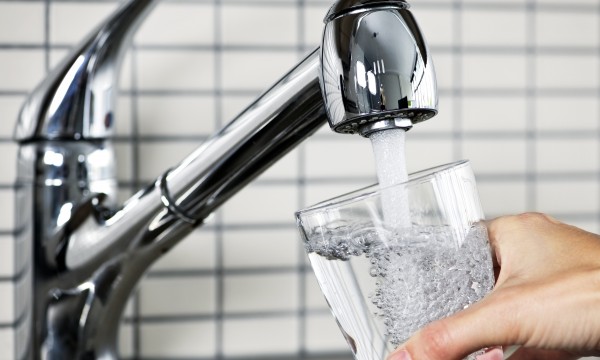Most faucet valves can be repaired by a householder armed with the right tools. Here are a few tips on fixing a faucet.
- Browse Categories
- All Tips
-
Home & Garden
- All
- Appliances
- Bathroom
- Cleaning
- Crafts
- Decorating
- Electrical
- Flooring
- Furniture
- Garage Door
- Gardening
- Green Living
- Heating
- Home Alarm Systems
- Home Maintenance
- Home Remedies
- Home Security
- Home Staging
- House Sitting
- Junk Removal
- Kitchen
- Lawn Care
- Lock Systems
- Moving
- Outdoor Living
- Pest Control
- Plumbing
- Renovation
- Roofing
- Snow Removal
- Storage
- Tools
- Tree Service
- Health
- Family
- Travel
- Auto
- More Tips
Your account is now active!

How to repair a faucet
July 27, 2015

Getting the right parts
The only way to be sure that you have the correct replacement part is to take apart the faucet, remove the worn or broken item and take it to the hardware or plumbing-supply store to make a match.
Beginning a faucet repair
- Before you begin a repair job, turn off the water supply to the fixture by closing the shutoff valves. Open the faucets to drain the line.
- Close the drain stopper to prevent small parts like screws or washers from falling down the drain, and line the sink with a towel or rag to protect it from scratches.
- As you disassemble, lay the parts down on a flat surface in the order in which you removed them. Examine each part carefully, replacing those that show signs of wear. Clean all parts before reassembling.
Repairing washerless faucets
- All washerless faucets work in a similar way. When you move the handle, a ball, a ceramic disc or a cartridge moves, opening a channel through which the water flows.
- Moving the handle back closes the channel, stopping the flow of water. Washerless does not mean that the faucet will not drip or leak; O-rings, valve seats and other parts can wear out.
Repairing a compression faucet
- Regardless of the design, all types of compression faucets work basically the same way. When the handle is turned to shut off the water, the stem moves into the valve seat. A seat washer or diaphragm keeps the water from flowing.
- Turning the faucet on loosens the valve-seat seal, allowing water to flow. On the handle end, the stem is sealed with an O-ring or packing to prevent water from seeping out at the handle.
- If the spout drips, it is probably because the seat washer is worn out or the valve seat is damaged. If water leaks out of the handle, the O-ring (or the packing) needs to be replaced.
- Turn off the water to the faucet, open the spout to drain, then close the drain. Remove the handles. This is usually done by prying off a cap with a screwdriver or pocket knife to get to a screw or fastener.
- Some compression faucets have a diaphragm rather than a seat washer; it is replaced the same way as the washer.
Repairing a ceramic-disk faucet
- Turn off the water to the faucet, open the spout to drain then close the drain. Most leaks in a ceramic faucet can be repaired by cleaning the bottom of the disk cylinder and replacing three flexible washers, called inlet seals.
- If the faucet continues to leak after these repairs, replace the disk cylinder.
Repairing a rotating-ball faucet
- Turn off water to the faucet, open the spout to drain then close the drain. To stop drips from the spout, replace the inlet seals and springs in the valve seat with duplicates.
- To stop drips from the base, replace the O-rings at the top and base of the faucet body or replace the whole ball assembly.
Repairing a cartridge faucet
- Turn off water to faucet, open the spout to drain then close the drain. Most drips in a cartridge faucet are caused by a worn cartridge.
- Some cartridges need special tools, others can be lifted out with pliers. Take the old cartridge with you to buy a duplicate.
- To stop leaks at the faucet base, replace the O-rings at the top and bottom of the cartridge housing.
National advertising powered by Mediative.com. Yellow PagesTM, Walking Fingers & DesignTM, YP.caTM, Find. & DesignTM, YellowPages.caTM, Canada411TM and YP ShopwiseTM are trademarks of Yellow Pages Digital & Media Solutions Limited in Canada. All other trademarks are the property of their respective owners. Copyright © 2018 Yellow Pages Digital & Media Solutions Limited. All Rights Reserved.
More Tips
The material on this website is provided for entertainment, informational and educational purposes only and should never act as a substitute to the advice of an applicable professional. Use of this website is subject to our terms of use and privacy policy.






